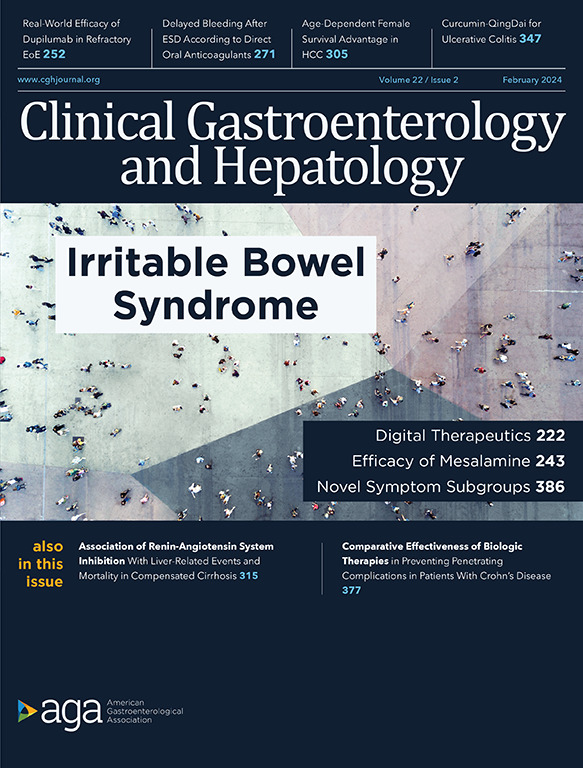美国代谢功能障碍相关性脂肪肝的临床指导与实际管理之间的差异。
IF 11.6
1区 医学
Q1 GASTROENTEROLOGY & HEPATOLOGY
引用次数: 0
摘要
临床实践指南有助于代谢功能障碍相关性脂肪性肝病和代谢功能障碍相关性脂肪性肝炎(MASH)患者的诊断和管理,尽管迄今为止这些指南的实施情况并不理想1,2。我们以最近发布的2023年美国肝病研究协会(AASLD)基于实践指南的建议为参考3,评估了目前真实世界中对MASH患者的管理情况,以找出临床实践中的差距。我们从 "阿德尔菲真实世界 MASH 疾病专项计划"(Adelphi Real World MASH Disease Specific Programme)中提取了数据,该计划是一项具有回顾性数据采集功能的横断面调查(2022 年 1 月至 6 月期间来自美国的 85 位肝病专家、胃肠病专家和内分泌专家[补充表 1]以及 633 位患者[补充表 2])。AASLD 指导算法的两个关键目标可作为参考点:排除低发病率人群的纤维化(目标 A)和识别/管理 "高危 "MASH 或肝硬化患者(目标 B)3:目标 A 包括由初级保健医师 (PCP) / 内分泌医师初步诊断的 100 名患者,目标 B 包括由消化内科医师 / 肝病医师管理的 533 名患者。本文章由计算机程序翻译,如有差异,请以英文原文为准。
Variance Between Clinical Guidance and Real-World Management of Metabolic Dysfunction-associated Steatotic Liver Disease in the United States
求助全文
通过发布文献求助,成功后即可免费获取论文全文。
去求助
来源期刊
CiteScore
16.90
自引率
4.80%
发文量
903
审稿时长
22 days
期刊介绍:
Clinical Gastroenterology and Hepatology (CGH) is dedicated to offering readers a comprehensive exploration of themes in clinical gastroenterology and hepatology. Encompassing diagnostic, endoscopic, interventional, and therapeutic advances, the journal covers areas such as cancer, inflammatory diseases, functional gastrointestinal disorders, nutrition, absorption, and secretion.
As a peer-reviewed publication, CGH features original articles and scholarly reviews, ensuring immediate relevance to the practice of gastroenterology and hepatology. Beyond peer-reviewed content, the journal includes invited key reviews and articles on endoscopy/practice-based technology, health-care policy, and practice management. Multimedia elements, including images, video abstracts, and podcasts, enhance the reader's experience. CGH remains actively engaged with its audience through updates and commentary shared via platforms such as Facebook and Twitter.

 求助内容:
求助内容: 应助结果提醒方式:
应助结果提醒方式:


